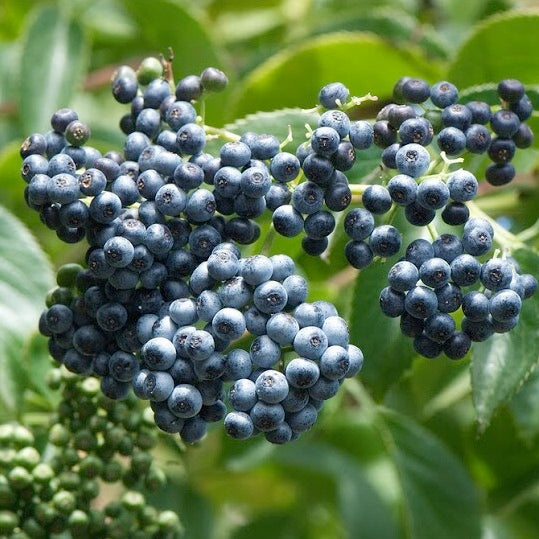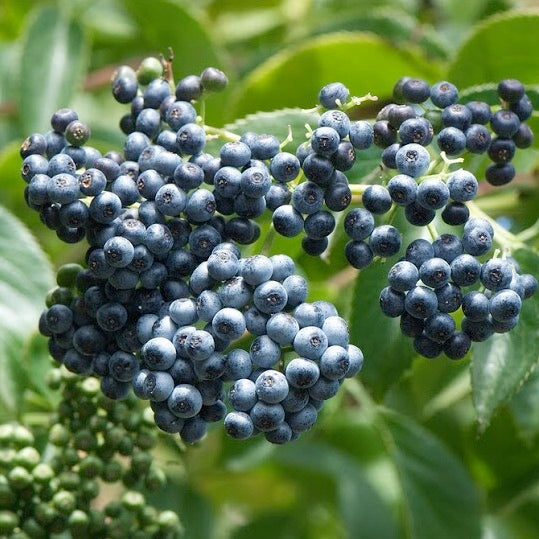Blue Elderberry, 'Sambucus Mexicana'
Blue Elderberry, 'Sambucus Mexicana'
3 inch Pot - 8 to 12" tall plant in 6" diameter x 7" tall pot. SHIPPABLE
1 gallon Pot - 8 to 16" tall plant in 5" x 5" x 6" tall pot. SHIPPABLE
Small Tree Pot - 8 to 16" tall plant in 5" x 5" x 6" tall pot. SHIPPABLE
Large Tree Pot - 8 to 16" tall plant in 5" x 5" x 12" tall pot. SHIPPABLE
3 gallon Pot - 18 to 36" tall plant in 10" diameter x 8" tall pot. IN STORE ONLY
5 gallon Pot - 30" to 60" tall plant in 11" diameter x 10" tall pot. IN STORE ONLY
15 gallon Pot - 60" to 75" tall plant in 17" diameter x 15" tall pot. IN STORE ONLY
Couldn't load pickup availability
A native to the California area, blue elderberry is a small tree that can also be grown as a shrub. While it can take on a messy, shrubby look, this plant responds readily to pruning. In the spring, the elderberry produces clusters of small white flowers, followed by small berries that are ready to pick when they turn dark blue. Often, the berries are used to make cordials and liqueurs as well as jellies, pie fillings, and sauces.
Please note that if berries are ingested before they are ripe, people may experience an upset stomach. Also, if used medicinally, please use caution and consult with professional medical or healing persons.
CARE INSTRUCTIONS
Elderberry should be planted in well-draining soil in full to partial sun. It is very tough and easy to grow, and it responds well to pruning. Once it is established, watering can be reduced significantly.
ABOUT THIS PLANT
Botanic Name: Sambucus nigra ssp. caerulea
Tongva Name: Ku.ut
Common Names:
Blue Elderberry,
Mexican Elderberry,
Tapiro
Lifespan: Deciduous
Hardiness Zone: Zone 4- Zone 9
Fruiting Season: Flowers in spring and berries are ready for picking in the fall
Growth Structure: Elderberry grows as a shrub to a small tree of up to 25 ft.
Fertility Preference:
★
★
★
★
★
Water Preference:
★
★
★
★
★
Sun & Light Preference:
★
★
★
★
★
Fruiting Season: Flowers in spring and berries are ready for picking in the fall
Dormancy: Winter
Cold Tolerance: 5°F
Flowers? Yes, Yellow, Cream
Edible?: Yes
Native to: West coast from Oregon to Baja California up to western Texas


